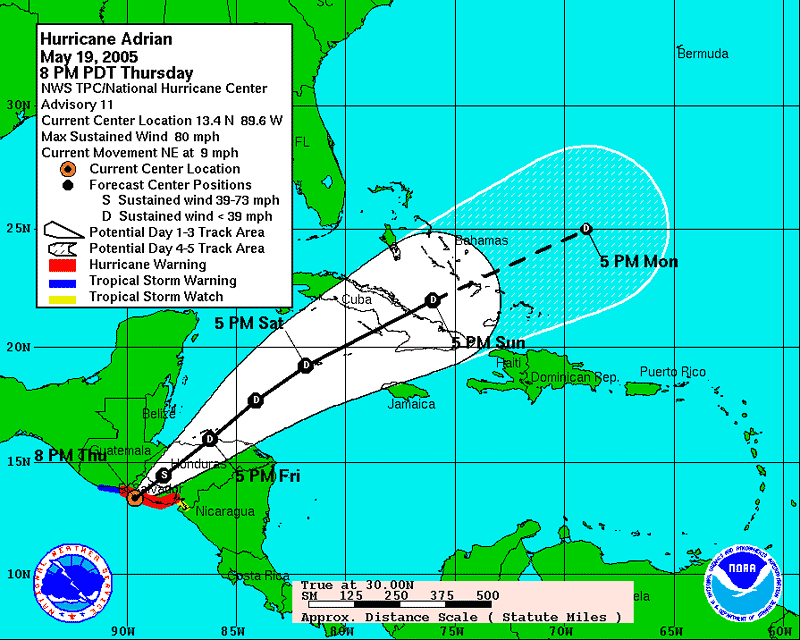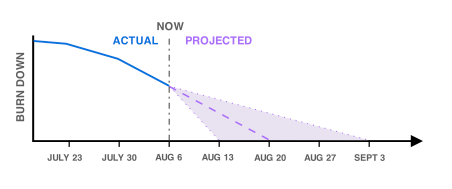Who’s the author and do we care?
Phil Town is the author of two books, 2006’s Rule #1 and Payback Time
Town’s origin story is that casting about after serving in Vietnam as part of the Green Berets, he worked as a river guide in the Grand Canyon, where an older investor he met offered to teach him the ways of the stock market.[1] He then claims to have turned $1,000 into $1,450,000 in five years and became a full-time investor[2].
Now, he’s got a popular podcast where he’s teaching his daughter Danielle Town (who is so great as a foil and voice of the listener), and wants you to attend his seminars and subscribe to his stock research tools from him.
Should I read this or not?
Totally worth reading if you don’t already have a valuation strategy or process you’re into, with the caveat that theres’s some confusing additional material that might make you scratch your head.
If you do, or you’re more generally familiar with value investing (why it can work, particularly), there may not be a lot here.
The meat of the book: how to find good businesses on sale
Distilled, Rule One tells us to invest in good stocks that are 50% off. He’s got the “Four Ms” for you
- Meaning
- Moat
- Management
- Margin of Safety
And then walks you through each one. Some are easy to understand: for “Moat” he talks about competitive advantages you can count on over time. For “Management” you’re looking for some key metrics, and there are good explanations of why you want to look at each one.
“Meaning” isn’t quite the right term (and to his credit, on his podcast Town’s joked about how the neccessities of book marketing forced the names so there would be a catchy “Four Ms”) — but here, do you understand what the business is doing, and would you buy the whole business?
Where the real meat is for people will be in how you value and price stocks, looking for the discount. And here’s where a lot of math comes in, and I respect that: this isn’t Greenblatt’s “Magic Formula” where you just rank all the stocks. For every stock, Town walks through how to estimate the future value of the stock, and compare it to alternatives, like investing in U.S. Treasury bills, or against expectations.
I dug this a lot, but I also had to break out the spreadsheets, and it’s way more of a pain to get all the data together (this as much a problem with the web in 2017 though). Handy solution though — you can just subscribe to his website and get all those numbers in one place.
You end up with what Town calls the “sticker price” for a stock, the current fair value for a company given expectations for its growth. The explanation for the concept is excellent — that price should be a starting point, and you want a sale.
Running those numbers was an eye-opener for me and taught me a lot about how to think about stocks as both being a company’s value in the present but an expectation of future growth as well. For instance, I’d been griping that one company seemed wildly under-valued based on their price/earnings ratio. When I ran through the process here, I understood that it was priced perfectly reasonably.
Once you can calculate the sticker price, you want stocks that are at least 50% off. For this to be true, either the company is deeply out of fashion or something has gone horribly wrong and the stock’s being beaten up over bad news. As I write this, the CAPE (Cyclically Adjusted PE Ratio) is at 30.62, which is historically very high, and you’re not going to find many stocks on sale for half off.
Going off the rails: add technical analysis
Chapter 12 is “The Three Tools” and here Town talks about “red light” and “green light” indicators for whether to buy a stock. Here we diverge entirely from the value of a stock and get into some entirely different territory, and where I think the book loses people. Buying quality businesses on sale is simple, and while it takes a little work, it makes sense as you’re doing it.
In Chapter 12, suddenly we’re not just looking at business, we’re now trying to figure out what everyone else is doing, and things get way harder to understand.
The three tools:
- Moving average convergence divergence. As a measure of whether there’s “pressure” pushing the stock up or down
- Stochastics. Measures if something is “overbought” or “oversold” — and the explanation of this one is not great
- Moving average.
I’m going to say up front I didn’t get this chapter at all. I feel like I’m missing the point, so this will be a bit more uncertain.
This chapter confuses the issue by . For instance, you’re supposed to look at Stochastics for crossings of the 14-day and 5-day lines. For one, most places you look you don’t get a ‘buy’ and a ‘sell’ line as the book describes them, you get a “%k” and “%d” and it’s confusing. When I got through the instructions for setting one up using Town’s settings for time frames, I looked up some stocks, and it was a coin flip on whether the stock went in any discernable direction.
I don’t know if I was just unlucky or if I’m even using the tools right. My point is that if you’ve gone through the book and you’re working with pretty clear, understandable numbers (earnings per share is pretty much earnings per share), this shift to difficult to understand technical indicators is confusing and exaperating.
Moreover, there’s no convincing why here. The explanation of what we’re doing in this chapter doesn’t make it clear why it’s important to pay attention to it. It seems like the fact that you’ve found a company that’s on sale for 50% off should far outweigh whether others are getting into or out of the stock at the moment.
I was left thinking there are important signals I shoud pay attention to in addition to basic valuation, but unsure how I’d do that.
This is also where the book falls down on the cover promise of “successful investing in only 15 minutes a week!” Even if you’re only monitoring the few stocks you’ve bought, using these three tools once a day to see if you should bail on a stock, you’ve burned your 15 minutes squinting at whether one line crossed another.
It all feels like Town, as a long-time experienced investor familiar with tools like these, was unable to explain these or their importance in a way that made sense to those without the same experience, which is unfortunate because I got a lot out of the valuation sections.
And from there, much good is undone
Chapter 13 then walks through a possible example as a couple considers buying The Cheesecake Factory, Inc. The valuation all makes sense, and they buy. A chart of spectacular returns is shown — CAKE goes from $18.90 to ~$36 in two years, an 90% gain. Nice. The couple’s example $20,000 is now $38,000. Except… here’s what Town writes:
By getting in just below $19, and then moving in out 11 times in two years with the big guys, and by adding $500 a month they were saving, by July 2005, CAKE gives Doug and Susan a nice compounded rate of return of 56% and their $20,000 is now worth $78,000
He’s claiming twice that return rate.
Nope. Nope nope nope nope. Just… not true. At all.
1) Is the regular additional contribution counted as part of the return? It’s unclear. But why mention it otherwise? You can’t have them put more cash in and count that as what it’s worth now. I could have an $100 investment that’s totally flat and add $1m and wow, I beat the stock market over two years because now I have $124. This is, at best, confusing. At worst, he’s counting over $10,000 and associated gains in value as part of the return that shouldn’t be there.
2) They moved in and out 11 times? How do we know that? Does this assume that they perfectly timed each of those? When were those 11 moves? What did the technical indicators say at the time?
3) They’re going to get creamed on short-term taxes. The investor who held for more than a year pays way less.
Investor A: bought at the same time and held. +$18,000, may be paying zero in taxes
Investor B: bought, as a beginner times moving in and out 11 times, up $58,000, might be $40,000 after taxes.
If you think Town is counting the additional contributions in taxes, we’re down to around $30,000 for Investor B.
It’s not okay that this important calculation is so unclear, and the handling of the additional contributions makes me extremely suspicious. It doesn’t make sense as written, and I don’t understand what the point is. 89% over two years is great! Why confuse things?
This raises a larger question: does this all work? We’re presented with a couple examples of Company A compared to Company B, walked through the Cheesecake Factory example, but beyond those hand-picked examples, all we have to rely on is Town’s accounting of his track record. I’d have felt much better about the whole thing given a wider accounting of his trades, or of studies done on historical data — like we have for Greeblatt’s Magic Formula book.
Put it all together, what’s it mean
I dug reading it, and particularly found it useful in making me do real work putting things together and looking at companies. But I also found the technical tools section confusing and hard to understand, and the example math particularly worrying. It occupies a weird place in an investment bookshelf: I can see recommending it to someone who is interested in Warren Buffet’s investment philosophy and wants to know how to crunch the numbers to find those great companies at attractive prices.
[1] The story, as told, is so perfectly mythic that it’ll probably raise at least one eyebrow if you read it. But whatever.
[2] (I spent a little time looking at this, but besides him raising money in 2013 for Rule One Capital, I couldn’t find anything on early investment proof or his returns as a manager).
[3] Similarly, Town claims early that as a Vietnam veteran, on his last day in uniform he was at the Sea-Tac International airport when someone spat on him and ran away. This… I don’t know. That spitting at veterans happened at all is disputed: there’s a whole book on this, Spitting Image by Lembcke, discussing how no incident like this has ever been documented as part of a larger case that antiwar activists and veterans were allied far more than is now generally believed.
I thought about looking into this in greater detail (particularly, why would he be at Seatac on his last day in uniform, when it seems like he’d have flown into McChord Air Force base?), and stopped. This has been hashed out many other places, and it doesn’t seem relevant. Let’s just grant Town this.



.jpg)